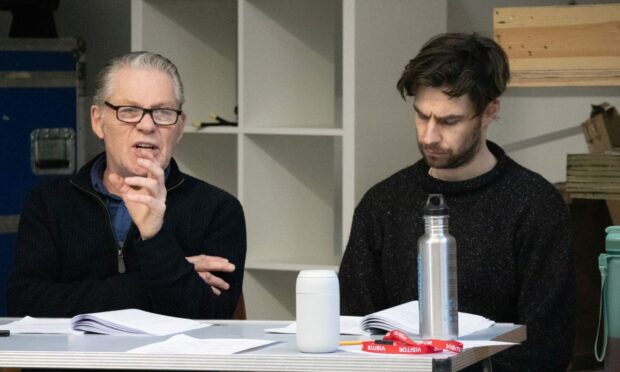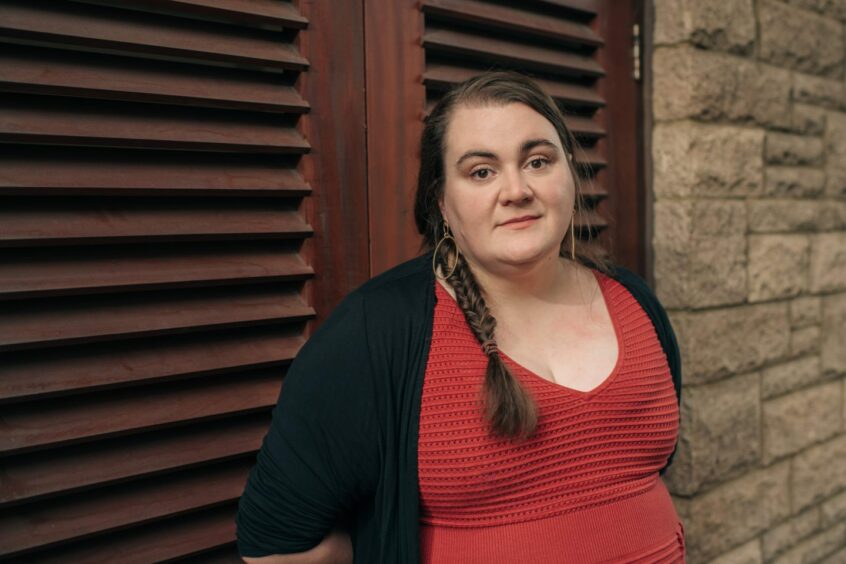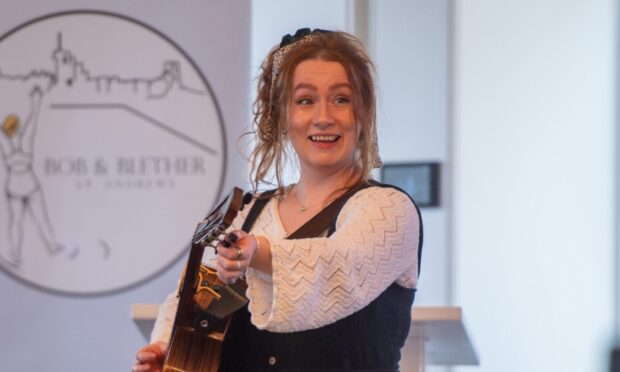The Byre Theatre and Perth Theatre are teaming up to present the world premiere of a play about love, loss and how people experience dementia.
The Man in the Submarine (Y Dyn yn y Llong Danfor) written by Edinburgh-based Laila Noble, was the winning entry in the inaugural St Andrews Playwriting Award.
This new award aims to offer a key career development opportunity for emerging playwrights living in Scotland.
The production will be staged at both Perth Theatre and the Byre Theatre in St Andrews.
Dark, surreal comedy
Laila’s dark and surreal comedy is inspired by her own attempts to understand her grandfather’s experience of dementia.
Set in the valleys of a rural Welsh village, there lies a submarine that’s out of place, rusted and rapidly filling with water.
Amongst the wreckage, a father and daughter find themselves in a delicate bubble together.
Claire does everything expected of her while trying desperately to forgive William for something he does not remember.
Originally from North Wales, Laila came to study in Edinburgh over a decade ago and loved it so much she stayed.
Lived experience
She explains: “My grandfather has dementia and he has been on this path now for some time. He will be 90 soon and it’s been at least a decade of our lives.
“Every time I go home he will ask what I’m up to, and I will tell him: ‘I’ve written a play for you, grandad, and it’s dedicated to you.’ And each time is the first time for him – and he’s delighted.”
While Laila was completing a Masters at the University of Glasgow she was asked to write a small exercise, and she began thinking of her grandfather.
She goes on: “The play started as an act of deep empathy to try and understand what it might be like to live it.
“We talk about dementia a lot from the outside – how hard it is for the people who love them, and how hard it is to watch someone slip away from you.
Trying to imagine
“While trying to cope with his dementia, I kept feeling we were losing sight of what he was feeling and that, sometimes, things felt like they were being done to him.
“I really wanted to put myself in the middle of that and try hard to imagine what he might be feeling, and what it must feel like to lose a sense of yourself and a sense of time and connection.”
Once Laila began sharing her project with other people she found they were open about their own experiences of dementia. She started to add in more characters and narratives as the play developed.
Laila hopes the production will bring together all the different sides to dementia that families may experience – from difficult times to moments of happiness and relief.
She adds: “I want to give some sense of autonomy back to the experiencer and so I hope that the play is never being done to them, but the narrative is always about them and how they are experiencing things in their reality.”
- The Man in the Submarine previews at Perth Theatre on February 7 and premieres at the Byre Theatre on February 9 before returning to Perth Theatre on February 10 – 11.
perththeatreandconcerthall.com
byretheatre.com












